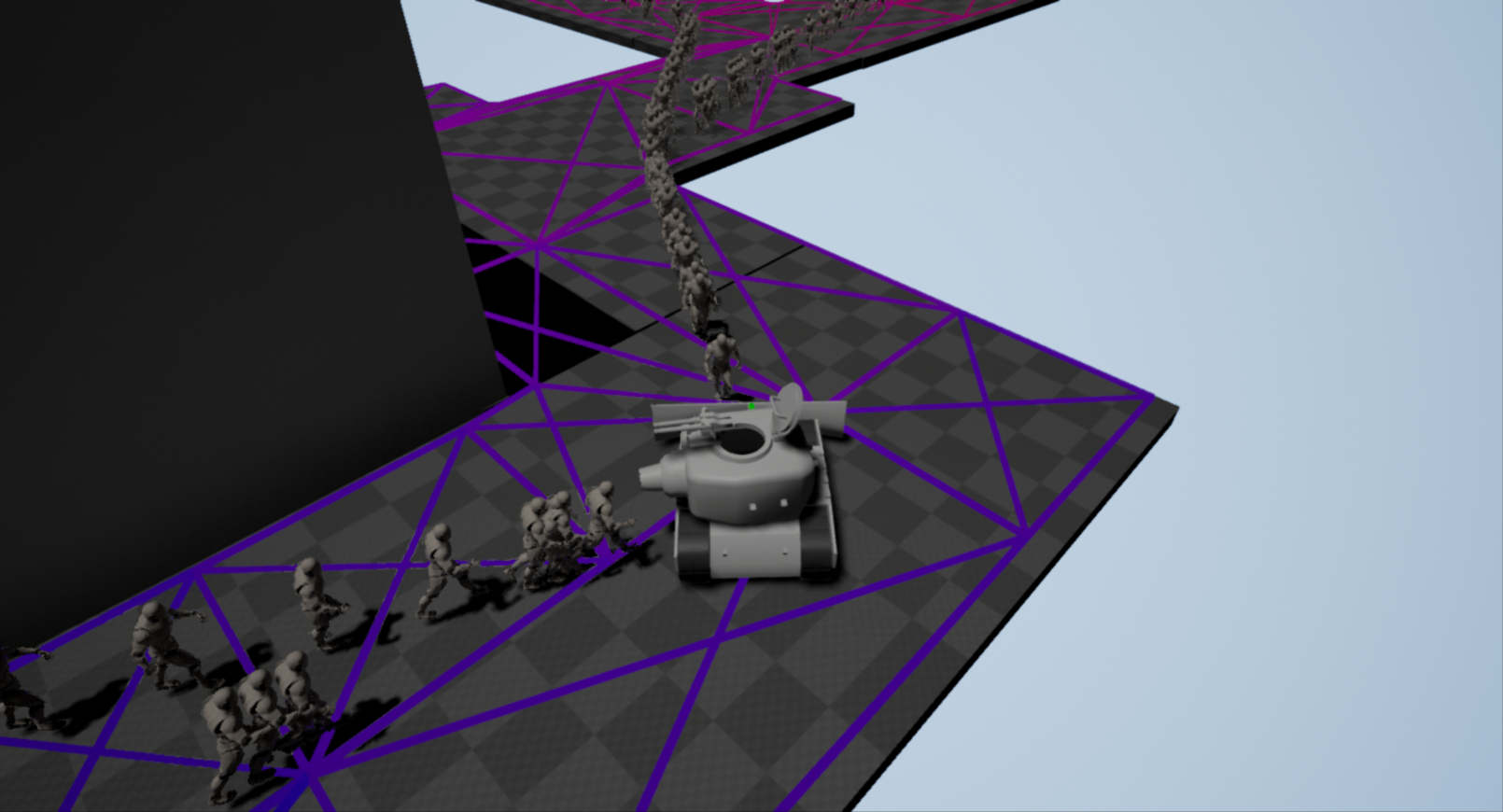I’ve been trying to write a plugin that understands level flow, but I’m a bit stuck and need some debug to help understand where my code is getting it wrong.
What I wanted to do was render the recast navmesh out, rendering each polygon as a color.
I found this code in the engine that looks like a good starting point
but when I grab the relevant functions and paste it in my code (copy and paste at present - I’ll start rewriting it once I actually get it to run) I get a compiler error as follows
1> Creating library C:\Users\stuart\Documents\Unreal Projects\TanksVsZombies\Plugins\AIDirector\Intermediate/Build/Win64\UE4Editor\Development\UE4Editor-AIDirector.lib and object C:\Users\stuart\Documents\Unreal Projects\TanksVsZombies\Plugins\AIDirector\Intermediate/Build/Win64\UE4Editor\Development\UE4Editor-AIDirector.exp
1>AIDirectorDebugComponent.cpp.obj : error LNK2019: unresolved external symbol "public: __cdecl FRecastGeometryCache::FRecastGeometryCache(unsigned char const *)" (??0FRecastGeometryCache@@QEAA@PEBE@Z) referenced in function "public: void __cdecl UAIDirectorDebugComponent::GatherData(struct FNavMeshSceneProxyData &)const " (?GatherData@UAIDirectorDebugComponent@@QEBAXAEAUFNavMeshSceneProxyData@@@Z)
1>C:\Users\stuart\Documents\Unreal Projects\TanksVsZombies\Plugins\AIDirector\Binaries\Win64\UE4Editor-AIDirector.dll : fatal error LNK1120: 1 unresolved externals
I knew my code would need the NavMesh, and it turns out there were a couple of other dependencies that needed adding…
PublicDependencyModuleNames.AddRange(new string] { "AIModule", "Core", "CoreUObject", "Engine", "InputCore", "RHI", "UMG", "ShaderCore", "Slate", "SlateCore", "Navmesh" });
But I cant figure out what I need to include to resolve FRecastGeometryCacheFRecastGeometryCache(unsigned char const *)
I was hoping Rama or someone from Epic might be able to help here as they obviously have lots of experience with interrogating the navmesh data. Rama shows lots of videos where he renders the navmesh for debug purposes.
Thanks in advance


